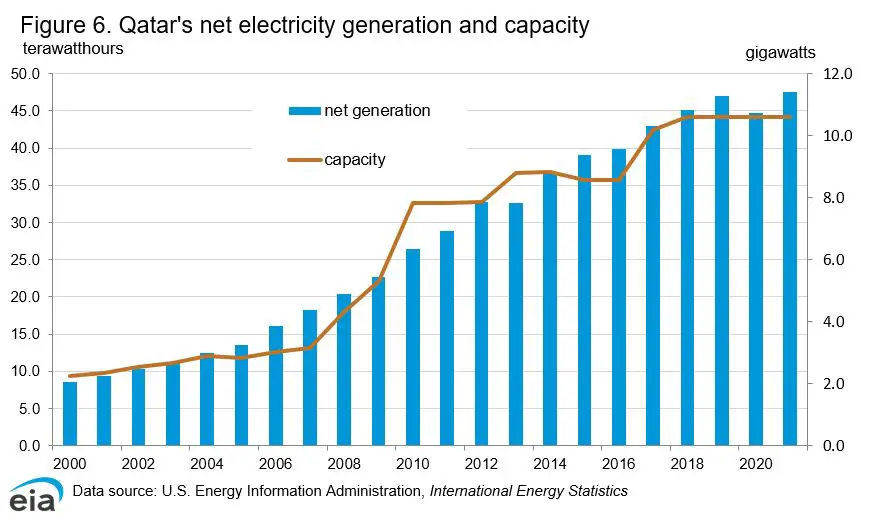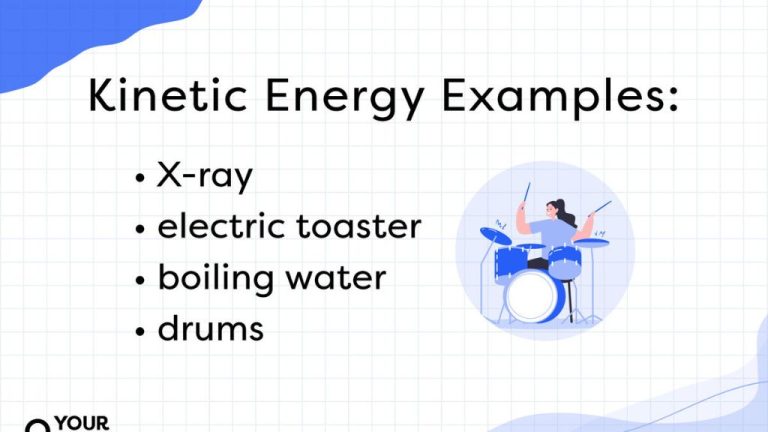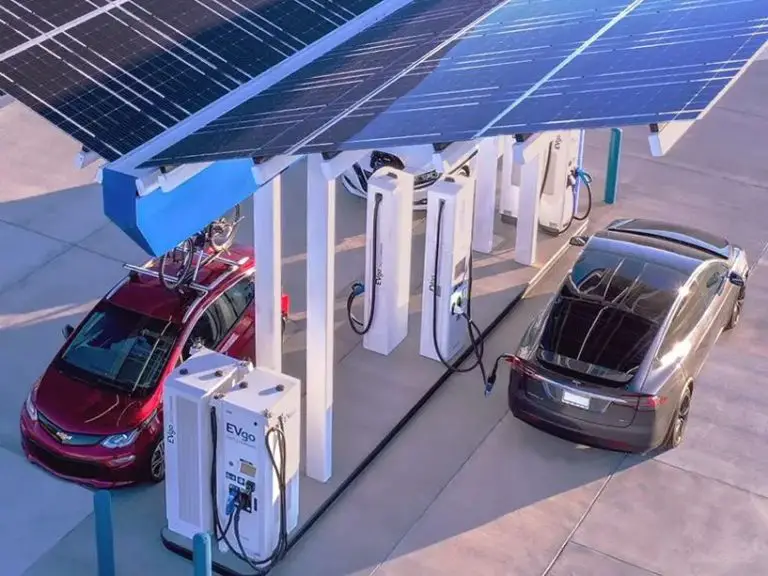Why Is Electricity So Cheap In Qatar?
Qatar has some of the cheapest electricity prices in the world. According to data from the World Bank, residential electricity prices in Qatar averaged just $0.05 USD per kilowatt-hour (kWh) in 2020 (Electricity Prices Worldwide). This is significantly lower than most other countries. For comparison, residential electricity in the United States averaged $0.14/kWh in 2020. Qatar’s low electricity prices are enabled by the country’s substantial oil and natural gas reserves, government subsidies, low population density, and other factors.
Oil and Gas Reserves
Qatar has enormous oil and natural gas reserves that it leverages to generate electricity cheaply. According to the U.S. Energy Information Administration, Qatar has the third largest natural gas reserves in the world after Russia and Iran, with around 24.9 trillion cubic meters. It also has around 25 billion barrels of oil reserves. The country is the largest exporter of liquefied natural gas (LNG) globally. With such abundant hydrocarbon resources, over 50% of Qatar’s electricity comes from natural gas.1 The ready availability and supply of natural gas for power generation is a major reason electricity prices remain low in Qatar.
Government Subsidies
The government of Qatar heavily subsidizes electricity prices for its citizens. According to Food, Fuel and Housing Subsidies, subsidies cover petroleum products including gasoline and diesel. The government also provides subsidies for housing, electricity and water. These subsidies help keep costs low for consumers.
Some experts argue that the subsidies should be reduced. For example, a 2023 study published in Frontiers in Environmental Science found that eliminating electricity subsidies by raising prices would free up resources for the government, which could be used for other priorities like renewable energy investment.1 However, the subsidies remain popular with citizens.
The government views the subsidies as important for supporting a high standard of living. By keeping electricity prices low, the government helps make Qatar an attractive place to live and do business.
Low Population Density
Qatar has one of the lowest population densities in the world, with only 12 people per square kilometer as of 2022 according to World Bank data https://data.worldbank.org/indicator/EN.POP.DNST?locations=QA. This small population of around 2.8 million is served by substantial oil and natural gas production and generation capacity.
Qatar’s oil production capacity is around 1.5 million barrels per day while its natural gas production capacity is over 5.5 billion cubic feet per day https://www.eia.gov/international/analysis/country/QAT. This means Qatar’s energy production potential far exceeds domestic demand, enabling exports and leading to low domestic energy costs.
With ample energy capacity compared to its small population, Qatar has been able to provide cheap electricity for its residents. In 2021, Qatar generated 48 terawatthours (TWh) of electricity while consuming just 36 TWh https://www.eia.gov/international/analysis/country/QAT. This surplus generation capacity is a key reason electricity prices remain low.

Climate
Qatar has an extremely hot climate, with average summer high temperatures around 106°F (41°C) and average highs even in winter above 77°F (25°C) [1]. This leads to very high electricity demand for air conditioning and cooling. Studies have shown a direct correlation between increased temperatures and higher electricity usage in Qatar[2]. Air conditioning alone can account for 70% or more of electricity demand during summer months[3]. As climate change leads to rising temperatures, the electricity demand for cooling will continue to increase in the future.
Lack of Transmission Losses
Qatar has very low electricity transmission and distribution losses compared to other countries. According to data from the World Bank, electricity losses were only 6.05% of total output in 2014 [1]. This is because most electricity generation occurs near the major demand centers, primarily in and around Doha. With little distance between the power plants and end users, there are minimal losses during transmission across the grid. Qatar’s electricity grid is contained within a small geographic area, so there is little need for long transmission lines that would lead to major efficiency losses. This proximity between generation and demand helps enable affordable and reliable electricity supply.
Natural Gas Prices
Qatar’s natural gas production costs are among the lowest in the world, enabling cost-effective liquefied natural gas (LNG) and gas-to-liquid (GTL) technology (Source). Natural gas accounts for over 50% of Qatar’s GDP, and the country possesses the third-largest natural gas reserves in the world after Russia and Iran (Source). Qatar’s abundant natural gas reserves and highly efficient production methods result in some of the cheapest natural gas prices globally. Since natural gas generates over 90% of Qatar’s electricity, these low gas prices directly translate into inexpensive electricity generation and supply within the country.
Electricity Demand
Qatar has experienced rapid growth in electricity demand over the past two decades, driven by population growth, economic expansion, and subsidized electricity prices (Enerdata). In 2021, total electricity consumption reached around 58 TWh, nearly triple the level in 2000. However, despite this growth, electricity demand remains below the country’s generation capacity. Qatar has nearly 30 GW of installed power generation capacity, mostly from natural gas (IEA). Much of this capacity was built in anticipation of increased demand from large industrial projects. But with some projects delayed or scaled back, demand has not kept pace with capacity additions. Thus, Qatar has a comfortable margin between supply and demand. This surplus generation capacity is one reason the country can provide cheap electricity.
Comparison to Neighbors
Qatar has some of the lowest electricity prices in the Gulf region. According to GCC Residential Electricity Tariffs, the average residential electricity price in Qatar is $0.02 per kWh. This compares very favorably to prices in neighboring countries like the UAE ($0.04/kWh), Saudi Arabia ($0.04-0.27/kWh depending on usage), and Bahrain ($0.05/kWh).
There are a few reasons why Qatar’s electricity prices are so much lower than its neighbors. First, Qatar has abundant supplies of cheap natural gas that it uses to generate electricity domestically. Qatar is the world’s largest exporter of liquefied natural gas (LNG), so it has access to very low cost gas. Second, the Qatari government heavily subsidizes electricity costs for citizens. Residential customers pay a fraction of the actual cost of producing electricity. Subsidies are less generous in places like the UAE. Finally, Qatar has a relatively small population, so it can easily meet domestic electricity demand while exporting most of its gas production.
Future Outlook
Qatar’s ability to continue providing cheap electricity in the long-term faces challenges as demand rises. The country has set a target to generate 20% of its energy from renewable sources by 2030, but presently nearly all of its electricity comes from natural gas. With economic and population growth, electricity demand is expected to continue increasing around 7% per year through 2025 according to government forecasts.
While Qatar has the world’s third largest natural gas reserves, higher demand may strain supplies if new production does not keep pace. The country could then be forced to import liquefied natural gas at higher global market prices. This could raise generation costs and require ending electricity subsidies, leading to eventual price increases for consumers.
Qatar aims to continue leveraging its natural gas resources to provide cheap electricity as long as possible. But sustaining current low prices in the long run will require diversifying its energy mix with more renewables, ramping up natural gas output, and controlling demand growth, especially during peak usage periods.






